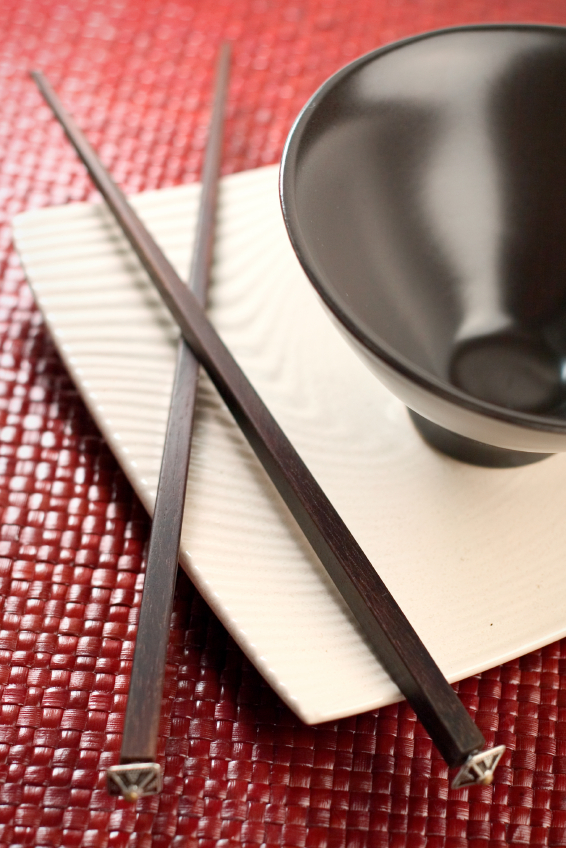Book Review: Japanese Women Don’t Get Old or Fat

Sushi, sashimi, tempura, chicken teriyaki, beef yakitori and seafood udon soup. There's lots to love about Japanese food. It's light, fresh and flavoursome. And here's the best reason of all – it's one of the healthiest cuisines to eat in the world. In the midst of a global epidemic of obesity and chronic diseases like diabetes and heart disease, the Japanese are doing something right.
In this book, Japanese Women Don't Get Old or Fat, Naomi Moriyama and William Doyle are keen to reveal their secrets.
The traditional Japanese diet, with its emphasis on vegetables, seafood, soy, clear broth, rice, green tea and seaweed, is a semi-vegetarian diet with less fat, less sugar and more antioxidants than ours. And it's paying dividends for the people who eat it.
Naomi entices us to live the Japanese way of life as she describes her and her family's lifestyles and values. She has spent half her life in Japan and half in the United States. Growing up in Tokyo, her childhood summers were spent at her grandparents' farm, hand picking tangerines (the local specialty) and roaming the green hillsides. It was here that she learned, as every young Japanese child does, all about the traditional Japanese way of eating.
Having completed school in Japan, Naomi gained a scholarship to an American university in Illinois. Separated from any trace of Japanese culture, she was thrown into the American ways of eating and living. And guess what? Within months, she was 10 kilos heavier than when she left Japan. Despite her efforts to go for that extra run each week, the weight would not budge – not until she set foot in Japan again. And the same thing happened years later when she brought her American husband home to Japan.
Living lean - the 7 secrets of the Tokyo kitchen
 Naomi Moriyama reveals the secrets of both the Japanese diet and the associated culture that keep the Japanese so slim and youthful. She has cleverly grouped them into two lists – the 7 secrets of the Tokyo kitchen and the 7 key foods of the Japanese diet which she calls the '7 pillars':
Naomi Moriyama reveals the secrets of both the Japanese diet and the associated culture that keep the Japanese so slim and youthful. She has cleverly grouped them into two lists – the 7 secrets of the Tokyo kitchen and the 7 key foods of the Japanese diet which she calls the '7 pillars':
- The Japanese diet is based on fish, soy, rice, vegetables and fruit
Top of her list is the home cooked Japanese meal – not restaurant food. Japanese women are masters of simple home cooking which hold great appreciation. The classic home cooked meal is a piece of grilled fish with steamed rice and simmered vegetables, accompanied by a bowl of hot miso soup, to be finished off with sliced fresh fruit and a cup of hot green tea. Considerably easier than the sushi and sashimi that leap into mind when Westerners think of Japanese food! - Small portions on beautiful bowls
On her arrival in America, Moriyama compared with astonishment the typical Japanese portions to the bucket-sized meals she was now being served. In contrast, in Japan, small portions of food are served on beautiful, small tableware. Size and the beauty of presentation are considered very important. - Super light cooking
Steam, pan-grill, sauté, simmer, stir-fry. The best cooking is the least cooking. The central idea of Japanese home cooking is to highlight the natural beauty and colours and let the essence of the food shine through. - Rice, not bread with every meal
While plain rice and plain bread are similar in nutritional value, plain rice with every meal eliminates the need for butter and toppings or sauces. - Love the power breakfast
Japanese women are dedicated to whipping up home cooked breakfasts for their families. Getting the day off to a good start eliminates the need to snack on those kilojoule-laden foods mid morning. - Dessert, but infrequently
Japanese fare has none of the rich desserts, pastries and sweets of European cuisines. The Japanese eat desserts and snacks less often and when they do, it's only a tiny portion. A typical wedge of cake is one-third the size of an American slice. - Japanese women have a different relationship with food
It's not about dieting – just healthy eating. Japanese mothers have a saying that recommends 'eat until you are 80 per cent full'. Very sound advice that ensures we don't keep eating until we are stuffed full and therefore gaining weight.Less is more. The Japanese diet contains a low 25 per cent fat, compared with around 34 per cent fat for an average Western diet. In addition, they eat less processed and refined foods, and their diet is lower in sugar and kilojoules than the typical Western diet.
And don't forget that exercise forms a daily part of life – walking, bike riding and gardening.
The 7 Pillars (key foods) of the Japanese diet – and why they're good for you
According to Naomi Moriyama, these 7 foods are what makes the difference:
- Fish
Fish is the meat of Japan. Nearly 10 per cent of the world's fish is consumed by the Japanese, yet they make up only 2 per cent of the world's population. Salmon is the most sought after, followed closely by tuna. Both are excellent sources of omega-3 fats, essential for a healthy heart and mind.
- Vegetables
Packed with vitamins, minerals and phytochemicals, vegetables are low fat, low kilojoule and high fibre. They fill you up and stop you eating too much. - Rice
Short grain white rice is the Japanese staple. Rich in carbohydrates, it has little sodium (salt), saturated fat, trans fat or cholesterol. Plain rice is a must-have food with every meal. It's filling and replaces many less nutritious alternatives – think creamy mash, bread with butter or pasta in a heavy sauce. Naomi suggests how you can eat even more healthily than the average Japanese. Capitalise on the expert advice to 'eat more whole grains': eat brown rice! - Soy beans
Miso soup, edamame, tofu, natto beans. The Japanese consume an average of 50 grams of soy per day compared to less than 5 grams for the average Westerner. Women in Japan have very low rates of breast cancer and men have lower rates of prostate cancer than women or men in Australia – thanks in part to isoflavonoids - the plant hormones from soy. - Noodles
Like rice, noodles are another staple. They are low in fat and full of filling carbohydrate. The Japanese cook noodles made from mung beans and buckwheat (soba), not just wheat. - Tea
The flavonoids from green tea help the Japanese avoid heart troubles and live longer. - Fruit
Packed full of protective antioxidants, fruit that has been decoratively sliced and arranged is the dessert of choice in Japan. By eating fruit instead of large amounts of biscuits, muffins, doughnuts and pies, the Japanese reduce their intake of processed and trans fats, which helps to lower their risk of heart disease.
The bottom line
This is an interesting book which gives you insight into how the Japanese eat. The writing style is friendly, easy to read and full of little anecdotes. Given that the author is an executive for a top advertising agency in New York, her writing skills are considerable and well used.
The book leads you through interesting stories and anecdotes from her childhood and adult years to show the contrast between Japan and the US. Her husband William Doyle is the co-author. It's a fascinating read full of side quotes, interesting little snippets and quotations and is semi-autobiographical in a similar vein to "French Women Don't Get Fat".
This is not your typical diet book that tells you exactly what to eat for breakfast, lunch and dinner. It's more about lifestyle and thinking about your food. If you like Japanese food, this is definitely a book to buy and read.
Japanese Women Don't Get Old or Fat is published by Bantam Doubleday Dell as a paperback 274 pages.
Buy it at the Booktopia here.



